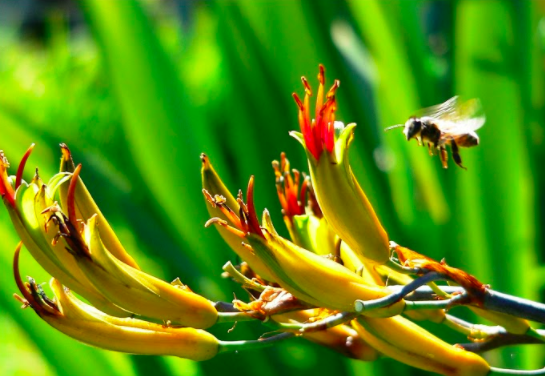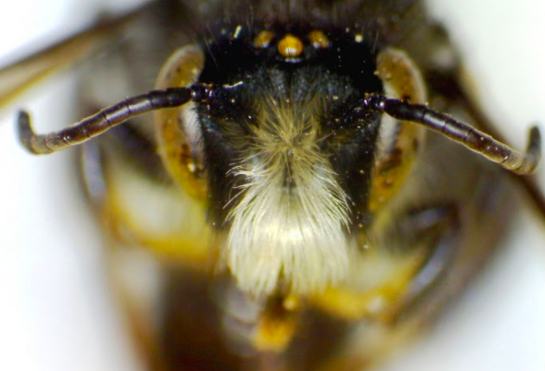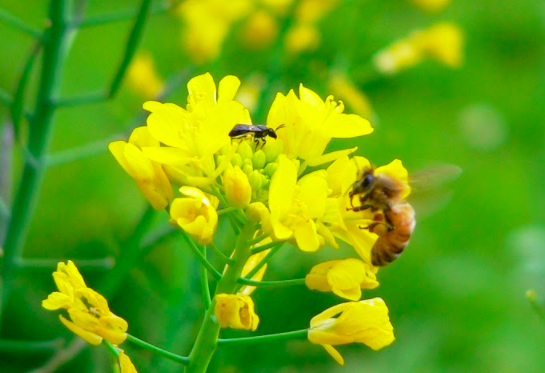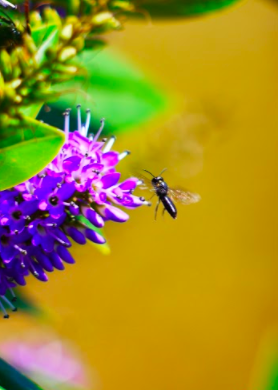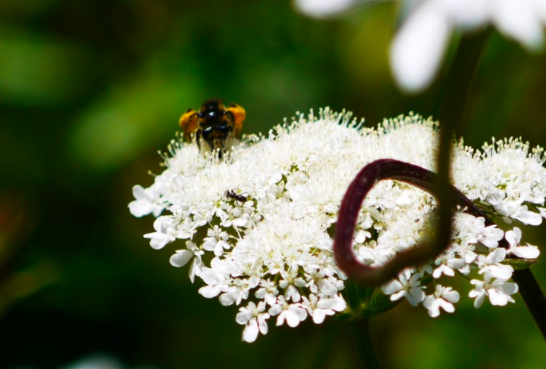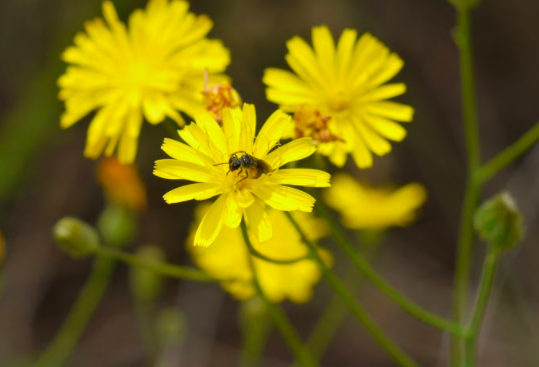Ngaro Huruhuru - Native Bees
We have 28 species of native bees in New Zealand. Of those 28, 27 are endemic – meaning they occur only in New Zealand, and 1 is indigenous – meaning it also occurs in Australia but arrived here unaided by humans (Hart 2007).
Our native bees largely fall into three families – Leioproctus, Lasioglossum, and Hylaeus.
Studying native bees can be difficult as there are few ways to easily monitor them. As a result, there is much to learn about their populations, diversity and distribution throughout New Zealand (Hart, January 2016).
Natives do not have hives or produce honey like honeybees. They live in nests in the ground, under bare, undisturbed soils. Females of the Leioproctus family (the largest family of the three) dig 20-30cm tunnels into the ground, into which they lay one egg, and feed the larvae with pollen and nectar foraged from surrounding flowers.
You can support native bees by planting and growing native plants and trees for them to feed on, and buying organic produce to stop the spread of pesticides.
Photos by Ngaire Hart
Aotearoa’s native bees are largely solitary, not even meeting their parents, the trees they are born under are suggested as acting as their parent, providing shelter, food and wellbeing.
Lasioglossum bees are similar, although several females might share a nest hole. The Hylaeus family nests in plant material – beetle holes, or hollow straws in dead flax stems (Macdonald 2018).
Native bees are not big travellers and so need flowers close by to collect pollen to feed their larvae.
They play an especially important role in many of our ecosystems because they are among the most critical and effective pollinators of native plants, including mānuka, kānuka and pohutukawa.
Quick Facts:
Non-aggressive and very rarely sting
Smaller than honey bees and bumble bees, generally black
Best identified by their nests - a cluster of small holes in the ground, generally in sloping loose soil
Solitary bees with one family living in a nest, in contrast to a honey bee hive
Each female lays three to 10 eggs before dying. Females from these eggs go on to build their own nests.
They forage on natives such as pohutukawa, ti tree and native mistletoe but have also adapted to introduced flowers including kiwifruit and ragwort.
For most species foraging range is limited (less than 100 m).
Not affected by the Varroa mite that threatens honeybees
In comparison to New Zealand, Australia has over 1,500 native bees species.
(Piper 2013)
ngaro huruhuru
E hoa mā, kia āta poipoi i tā tātou ngaro huruhuru
Friends, let's carefully nurture our native bee!
Learn more about our New Zealand Native Bee Poster Ngaro Huruhuru o Aotearoa
References:
Hart, N. (2007). Industrious Native Bees: A Case Study in Whangarei. Masters Thesis. Auckland University of Technology. Retrieved from (link).
Hart, N. (2016). Monitoring New Zealand's native bees: a collaborative approach using image analysis. Thesis. Retrieved from (link).
Kokeny, A. (2016). Native Bees…What’s the buzz? Auckland Ecology. Blog. Retrieved from (link).
Macdonald, N. (2018). Native bees - small, solitary and under threat. Stuff. Article. Retrieved from (link).
Piper, D. (2013). Our bees are dying. Stuff. Article. Retrieved from (link).

